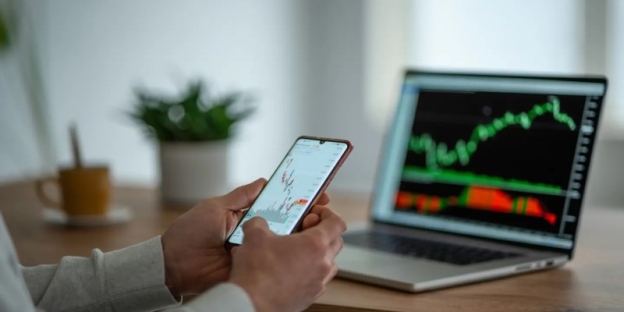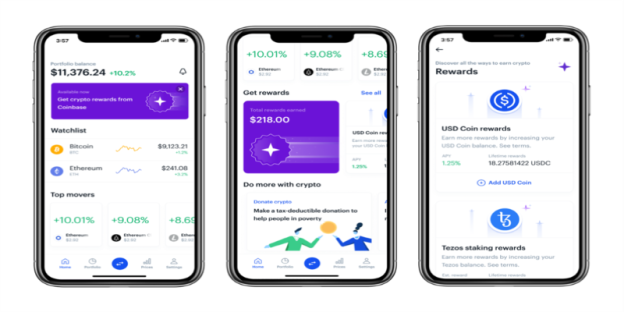How to Use Stock Market Apps for Daily Trading
Author: Tooba
Thinking about getting into daily stock trading using just your phone? With powerful trading apps now in your pocket, you don’t need to sit in front of a wall of monitors like old-school traders. You can buy, sell, research, and even chart stocks—all while sipping coffee or commuting to work.
But here’s the thing: just because trading apps are easy to use doesn’t mean daily trading is easy to master.
How do you use stock market apps to trade smart every single day? Let's break it down in a simple, practical guide that can help.
Step 1: Choose The Right App (Based On Your Goals)
Not all stock apps are created equal. Some are perfect for beginners. Others are built for advanced chart readers and high-volume traders.
Here are a few popular ones and what they’re best for:
App | Best For | Key Perks |
Robinhood | Beginners | Simple UI, zero commissions |
Webull | Intermediate traders | Great charting tools, real-time analytics |
Fidelity | Long-term and active traders | Research tools, fractional shares |
TD Ameritrade | Serious daily traders | Thinkorswim platform, deep analytics |
TradingView | Charting pros | Social trading, customizable indicators |
Begin by selecting the option that suits your comfort level and goals. Most apps are free to download, so try a couple before settling on one.
Step 2: Set Up Smart Notifications
Stock prices move fast. If you’re trading daily, you can’t afford to miss key price shifts.
That’s where notifications and alerts come in.

Here’s how to make them work for you:
- Price Alerts: Get notified when a stock hits a target price (up or down)
- News Alerts: Stay updated on company announcements or market news
- Volume Alerts: Some apps let you track sudden surges in trading activity
Example: If you're watching Tesla and want to buy only if the price dips below $700, set a price alert. Your phone buzzes, you open the app, and place your order—no constant checking needed.
Step 3: Build A Watchlist
Don’t clutter your brain trying to follow 30 stocks every morning.
Instead, use your app to build a watchlist of 5 to 10 stocks you care about or plan to trade soon.
A good watchlist helps you:
- Focus your attention on key movements
- Spot trends faster
- Make quicker trading decisions
Most apps allow you to colour-code, group by sectors, or even add custom tags (such as "Earnings This Week" or "Breakout Potential").
Step 4: Understand Real-Time Charts
If you're trading daily, charts are your best friends. But don’t worry—you don’t need to be a technical analysis wizard on day one.
Start with these basics:
Candlestick Charts
Show price movement across time (green = up, red = down)
Volume Bars
Help spot when big traders are entering or exiting
Moving Averages
Smooth out trends to help you avoid chasing noise
Apps like Webull and TradingView even let you zoom in, draw trendlines, and add technical indicators with just a few taps.
Want to trade breakouts? Set up a resistance line.
Looking for dip-buy opportunities? Watch the 50-day or 200-day moving average.
Step 5: Practice With Paper Trading First
Daily trading comes with risk, especially if you jump in without experience.
That's why most serious traders start by practising with paper trading first. It's a mock trading platform using virtual money. You can test strategies, learn the app interface, and build confidence without risking any real money.
Webull, TD Ameritrade (via Thinkorswim), and TradingView all offer paper trading tools.
Tip: Treat it like real money. Don't take risks you wouldn't take with your funds. That's the only way to learn truly.
Step 6: Master The Art Of Entry and Exit
The biggest mistake new traders make? Holding on too long—or jumping in too fast.

Here’s how apps can help you manage that:
Use Limit Orders
Don't just buy at "market price." Set your price.
Set Stop-Loss Orders
Automatically sell if a stock drops too far.
Use Take-Profit Orders
Lock in gains when a stock hits your target.
Example: Say you bought a stock at $40. You can set:
- A stop-loss at $38 (in case it drops)
- A take-profit at $45 (if it rises)
These tools remove emotion from the equation, and stock apps make it incredibly easy to set them up with just a few taps.
Step 7: Manage Risk Like A Pro
Successful daily traders never risk too much on one trade.
A good rule? Don’t risk more than 1–2% of your total portfolio on a single position. That means if your portfolio is $5,000, you shouldn’t risk losing more than $100 in one trade.
Stock apps help you:
- Track gains/losses in real-time
- Analyze your performance weekly
- Adjust positions quickly if needed
Some apps, like Moomoo and Webull, even offer built-in risk calculators.
Step 8: Stay Updated—But Don’t Chase The Hype
The stock market responds to news, earnings reports, economic updates, and occasionally even tweets.
Most stock apps include:
- A news tab with real-time updates
- Company-specific headlines
- Economic calendars
Check this info in the morning, but avoid getting sucked into social media hype. Just because a stock is “trending” doesn’t mean it’s a smart trade.
Make decisions based on your strategy, not the noise.
Taking Control Of Your Daily Trades
Daily trading through stock market apps isn’t just a trend—it’s a powerful way to stay connected to the market, build your skills, and potentially grow your wealth one trade at a time. With the right app and a smart strategy, you can turn your phone into a fully functional trading setup.
Start with a platform that aligns with your goals, learn to read the charts effectively, utilize alerts consistently, and manage your risk effectively. Daily trading isn't about guessing—it's about preparation, quick decisions, and keeping emotions in check. The tools are already in your hands. Now it's up to you to use them wisely.





